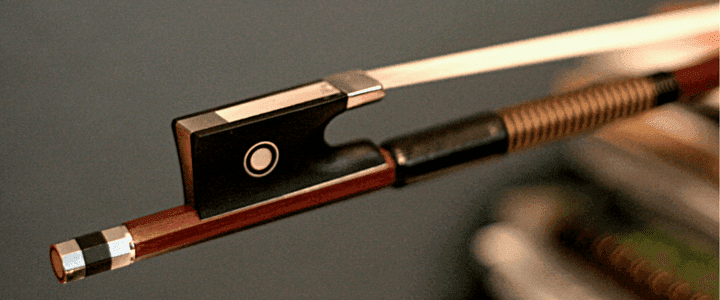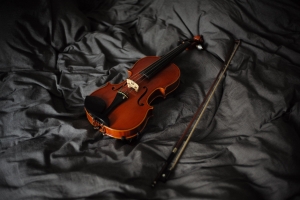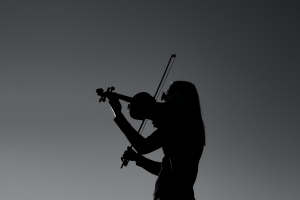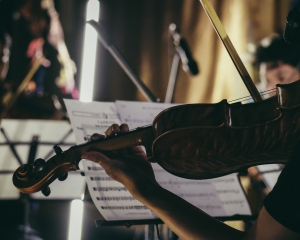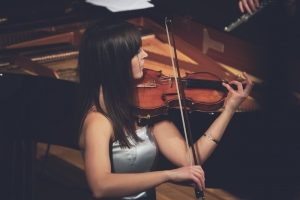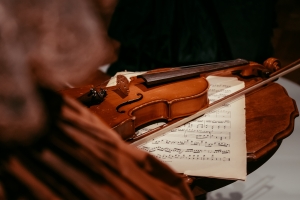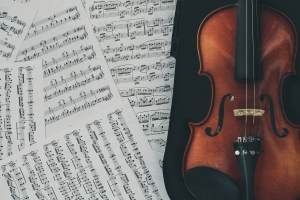The violin can be a difficult instrument to master, particularly when it comes to violin bowing. Intonation is often challenging; unlike the guitar, there are no frets to guide the fingers, and even if all the notes are correct and in tune you’re still left with the issue of tone.
The purest and perfectly in-tune notes can still sound bad if they’re played with poor tone. However, there are many methods and tricks to help your violin bowing, which can instantly improve your tone.
Here are some violin bowing tips to follow if you want to become a true professional!
How Can I Improve My Violin Bowing?
Here are a few quick tips that will dramatically improve your violin bowing techniques:
- Hold the bow correctly
- Keep your elbow at a right angle with the bow in the middle
- Make sure the bow is flat on the strings
- Try various violin bowing techniques like detaché, martelé, spiccato, and others
Of course, the best thing you can do to improve your violin bowing is to practice, practice, practice – and to take formal violin lessons whenever possible. Watching videos can help, too.
Check out this video to get an idea of the ideal violin bow hold for beginners:
How to Improve Bowing Technique: Violin Tips and Tricks
Here are some violin bowing tips to help you improve your form and ability.
1. Pressure
When you’re holding your bow correctly, increases and decreases in pressure are controlled with the first finger of your bow hand. Experiment by playing long tones and gradually increasing and decreasing pressure while maintaining bow speed.
When you create a beautiful tone, take note; identify what you did differently this time so that you can easily replicate it the next time.
2. Angle
You should always keep your bow as straight as possible. Try practicing in front of a mirror to monitor this.
Make sure your bow is making a straight line across the strings at all times. Practice your long tones all the way to the tip of your bow to master the angle of your violin bowing technique.
3. Flatness of Bow Hair
You don’t necessarily need all the bow hairs to be flat against the strings to produce the best tone. Most professionals have about three-quarters of the hairs pressed to the strings.
You can replicate this percentage by having the violin bow hairs turned very slightly toward you. Then, play with the angle slightly until you’ve established a tone that you love.
4. Tightness of Bow Hair
The quality of your violin bow parts will impact how well you are able to play the violin. Make sure your violin and bow are kept in mint condition!
Of special note is the violin bow hair tightness. Your bow hair should be neither overly tight nor overly loose. If your bow is too tight, it may adversely affect the arch of your bow and may produce a scratchy sound.
Once you’ve tightened your bow, you should be able to bounce it on one of your fingers and the hairs should just barely touch the wood of the bow.
5. Violin Bow Rosin
Make sure you’re comfortable with putting rosin on your own bow! If you don’t have enough rosin, the tone will disappear; if you have too much rosin, the tone will sound scratchy.
Applying more rosin is easy, but never try to remove rosin that you’ve already applied, even if it’s too much!
Familiarize yourself with how to rosin a violin bow – here is a quick video to show you how to do it:
Why Does Bowing Violin Technique Matter?
Although there are many advanced violin bowing techniques you can learn, you don’t need to worry too much about these until you become a more experienced player.
Before then, it is just important that you have an idea of how to hold a violin bow properly so that you can focus on mastering the fundamentals of playing this challenging instrument.
Your violin bowing form is important because it affects your performance and your health. If you have incorrect bowing, it can cause your wrists, hands, and arms to become poorly aligned or to move incorrectly. It can also lead to physical pain and cause a poor performance with a tone that is weak, bouncy, or inconsistent.
And let’s not forget about those awful creaks!
Advanced Violin Bowing Techniques
If you want to become a more skilled violin player, you should learn these bowing techniques:
- Legato – this violin bowing technique consists of smooth and connected strokes that produce slurred-sounding notes
- Détaché – these bow strokes are broad but clearly defined, resulting in notes that are not slurred
- Martelé – in this style of violin bowing, the notes are detached, rapid, and accented
- Staccato – these notes are played short and detached, usually with accents
- Spiccato – in spiccato, detached notes are played with a bouncing bow (or one that comes off the string)
- Sautillé – these notes are detached and very rapid, with strokes played in the middle of the bow
- Ricochet – if you bounce numerous notes in a row with one bow stroke, that’s a ricochet
- Tremolo – these are played at the tip of the bow and produce a sound that results from moving the bow quickly in small strokes driven by the wrist
- Pizzicato – this is when you pluck the string
- Double stops – playing two strings at once by putting the bow on both strings
- Triple stops – the same as double stops, but with three notes instead
- Quadruple stops – this can be challenging, and in music, looks like four notes stacked on top of each other
How To Improve Violin Bowing: Finding The “Sweet Spot”
The sweet spot is a violin bow technique term that refers to a point on the strings where they’re the most resonant; it’s different for every violin. As you become accustomed to really listening to your tone, you will find your violin bowing will naturally fall onto the sweet spot.
For most violins, the sweet spot is right at the end of the fingerboard. Experiment with placement between the fingerboard and the bridge until you find the best spot for your violin bowing.
Proper Bowing Technique Violin: How to Avoid Squeaks and Scratches
Develop a pure tone first; once that becomes natural, then you can experiment with tone colors. If you find yourself squeaking often, here are a few common reasons:
- You may not have the right amount of rosin on your bow hair.
- Your fingers may be accidentally hitting any other strings.
- Bow hair is too tight or too loose
- Location of your bow: too close to the bridge will get scratchy, too far up the fingerboard and you’ll lose clarity of tone.
How to Improve Your Violin Bowing Skills
To improve your violin bowing, practice as often as you can. Playing scales is one of the best ways to perfect a variety of violin bowing techniques.
You can also practice natural harmonics and arpeggios, both of which should help you get the hang of how to hold a bow to play the violin.
The absolute best thing that you can do to improve your violin playing – even more important than constant thoughtful practice – is to take private lessons with a professional.
Finding a teacher with several years of experience can be invaluable on your journey into the world of violin playing!
Photo by Anna
Shanika
